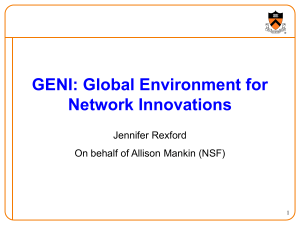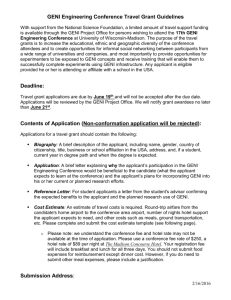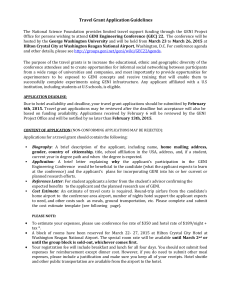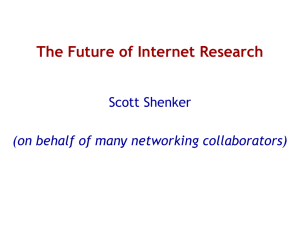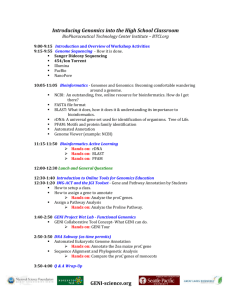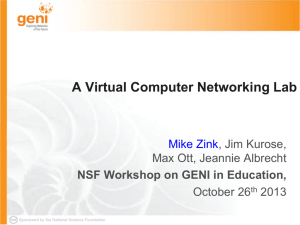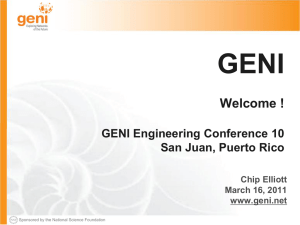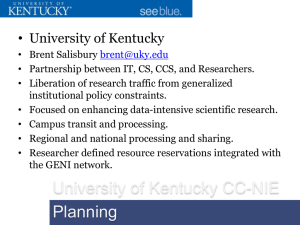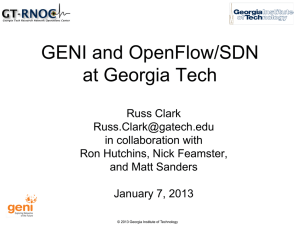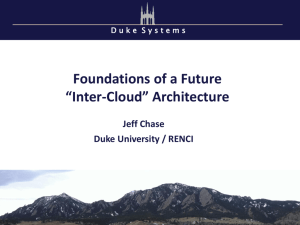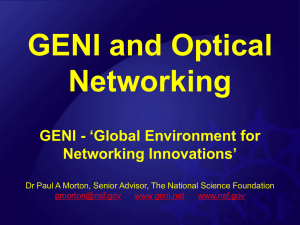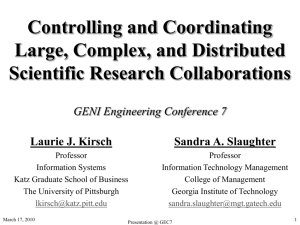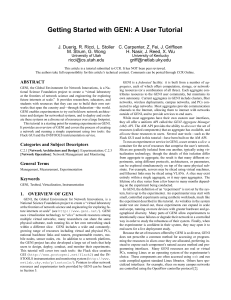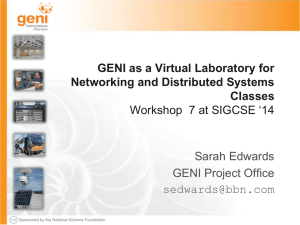Internet Architecture
advertisement
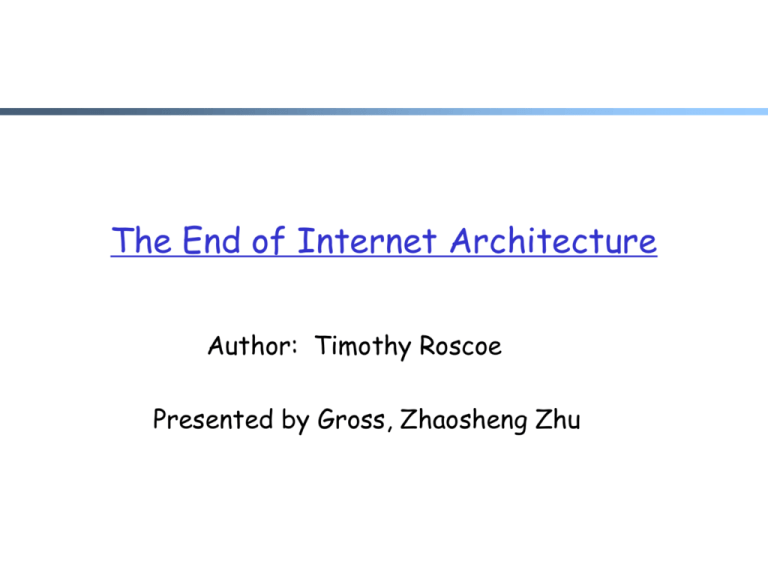
The End of Internet Architecture Author: Timothy Roscoe Presented by Gross, Zhaosheng Zhu Outline Introduction to internet architecture Pressures for internet architecture Why architecture? GENI Platform and What we will do Some challenges Summary 2 Introduction to Internet Architecture Internet Architecture does not act as a useful guide Separates distributed systems from networking Creates unnecessary problems for distributed systems 3 Pressures for Internet Architecture Pressures from Within Required Functionality • QoS • Security Against Attacks Introduced Network Functionality • Firewalls • NAT boxes 4 Pressures for Internet Architecture Pressure from Above Overlay technology • Increases burden on underlying networks • Increases difficulty to manage data flow 5 Pressures for Internet Architecture External Pressure Gatewayed networks • Phone Networks • Sensor Network Networks Proposed by Impasse paper 6 Why Architecture? Architectures fail to Offer interoperability across diverse networks Allow for easier application coding Allow providers to compete Facilitate innovation 7 GENI platform: virtualization The increasing trend toward programmability in networks needs virtualization technology GENI Platform uses virtualization. The hardware components can be sliced and shared between different users 8 GENI makes things easy Experiments under GENI is not complex. Under GENI platform, You can use a set of libraries and software management services to control you experiment (acquire resources and build ensembles). 9 GENI: invert the traditional layering of applications and networks GENI substrate views experiments embodying new networks architecture as applications sharing the platform. But, in traditionally, it defines a network architecture as a substrate for applications. 10 Deploying a new network architecture under GENI 1. Assemble a slice, that is, a set of virtual servers, routers, links, radios, sensors, etc. 2. Write and deploy the software implementing the network architecture to be used. 3. Write and deploy the software to peer the network with the existing internet in some way. 4. Write and deploy the newlyenabled services and applications. Why call software in step 2 network architect ure? Just some libraries! 11 However GENI does not define a new network architecture, because: It is not creating a fictional boundary between two disciplines. Structure of GENI leaves the question of end-toend connectivity an application defined issue. But writing applications are not becoming harder. Remember we can reuse the libraries and services provided by other parties. 12 What we suggest is: Take a application- centric look Give users the ability to create virtual machines, virtual routers and virtual links and users write applications by themselves Benefits: Services use explicit resources Complex cross-provider bartering based on packet measurement is not needed at all! Carriers just care for selling virtualized resources which is a easier task More… 13 Why architecture? Distributed system Distributed system Internet Arch. Networking research Networking research 14 Better, but still has challenges Routing as a library Each application is effectively setting up its own network. But until now there is little work on simultaneous routing on many overlapping graphs Discovery How do applications discover and bind to a set of resources? 15 Some other challenges Composition and federation As applications build their own networks, how will they talk to each other? Operations How will operators manage the substrate? This is more like problem in distributed systems. 16 Summary The concept of internet architecture has been useful in history but now is an obstacle for innovation. Removing it can make us move forward with more basic problems such as how to build and peer distributed applications. It is time to consider this. 17 Thank you ! 18
